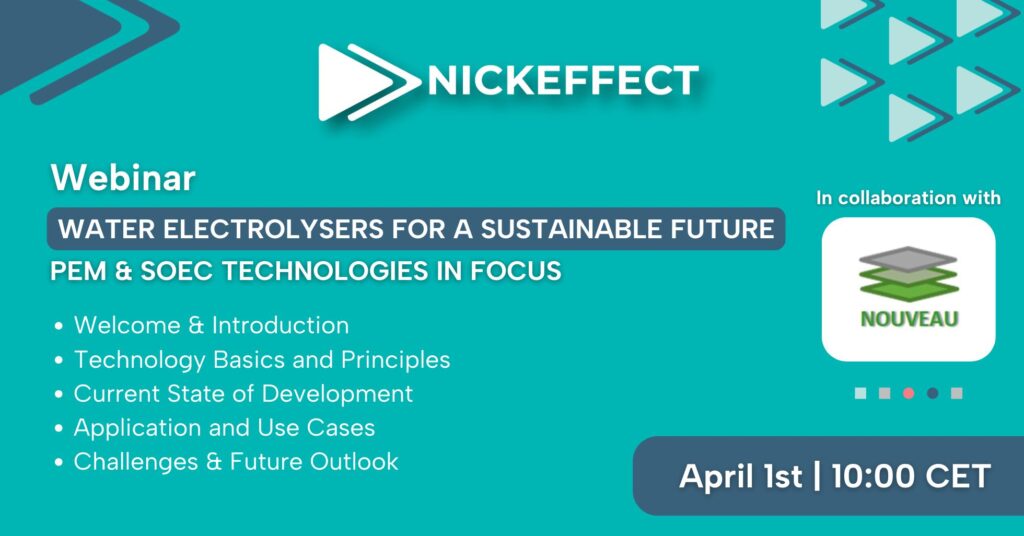News
NICKEFFECT project partner IRES just launched a new webinar focused on “Life Cycle Assessment: methodology and practical application in metal coating development.” This insightful session is a key deliverable within […]
NICKEFFECT invites you to watch the latest training session on Next-generation HT-PEM Fuel Cell Technology, presented by Nikolas Theodoropoulos from ADVENT. This insightful webinar is now available for on-demand viewing […]
NICKEFFECT was represented by its Project Coordinator, Aliona Nicolenco, from CIDETEC, at the 9th International Congress on Surfaces, Coatings, and Interfaces, held from 23 to 25 April in Albufeira, Portugal. […]
Magnetoelectric actuation is a burgeoning topic nowadays given the need for energy-efficient devices. Magnetoelectric actuation refers to the control of magnetic properties of materials using voltage. Several mechanisms contribute to […]
Modeling materials from first principles, i.e., without the need to fit or depend on experimental data, has taken on great importance in the last twenty years. Such methodology allows a […]
On April 1st, NICKEFFECT and the NOUVEAU project joined forces to host an insightful webinar titled “Water Electrolysers for a Sustainable Future”. This event provided insights into the latest advancements […]






